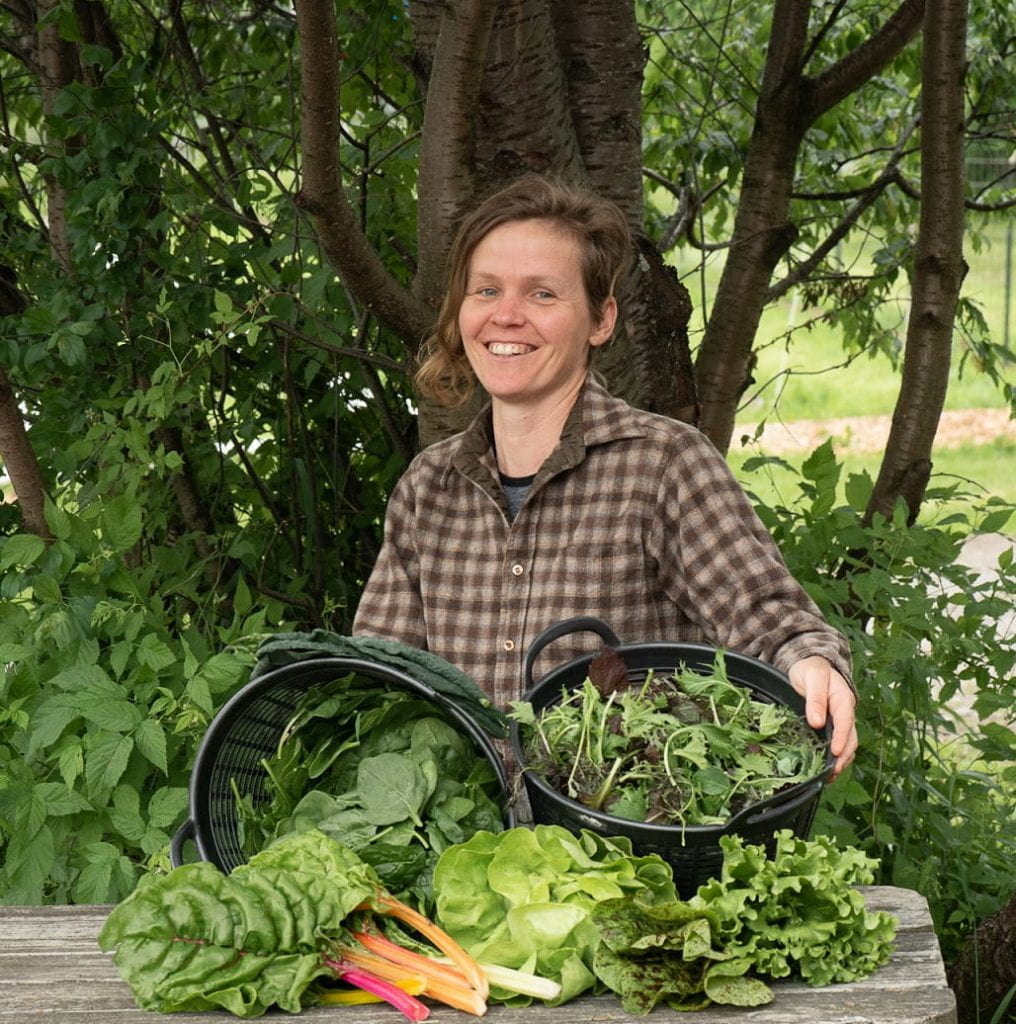What is your role on the local foods team at CCE and what services do you offer to community members?
Here at Cooperative Extension I work in the Ag and Food Systems Department as the Local Food Program Leader, I started in April of 2017. We have a shared-use kitchen onsite called the Harvest Kitchen at the Extension Learning Farm. I manage that space which gets used for a lot of neat things including classes, technical assistance and rentals. The kitchen covers everything from consumer education classes through our Master Food Preservation Program to our Celebrating Local Food series which engages folks in the area through foods that are available seasonally and making them more capable, excited and comfortable using these ingredients in the kitchen.
In addition, I work with new food entrepreneurs, answering 1-1 technical assistance questions on everything from value-added production, to regulations, labeling, inspections and record keeping. If a grower wants to create a product and I can help them through the process of learning how to do that.
The Harvest Kitchen is a shared-use commercial space that can be licensed for someone who owns a business. It might be a caterer that wants to bring food offsite for meals or events. Maybe they are somebody that wants to make a product and then distribute it wholesale or retail. Basically, the Kitchen exists to get people excited about food in many different ways.
What do you like about your position?
I love many things about this position. One part I find exciting is getting to work with community members from both ends of the spectrum of food. It might be a grower that wants to understand what it would take to turn the basil they’ve grown and make it into pesto to sell it locally or wholesale. It might also be a home gardener wondering how to preserve their herbs in the summer so they can use them in the winter months. Through our Master Food Preserver Program we teach people everything from canning, to freezing, drying, fermenting, and cold storing vegetables. I like helping to increase the ‘Do-It-Yourself’ skills on the consumer level and supporting producers if they want to expand their business around value-added goods.
What got you interested in supporting and promoting local foods?
I grew up on a homestead in DeKalb and I didn’t know how good I had it then. There were a lot of things that I did only because I was told to- from planting and weeding in the garden, to harvesting and canning fruits and vegetables to butchering our chickens. A lot of that was just ingrained in the daily patterns of my family life. I left the area to go to college, and it was months into being away that I recognized not just the quality of the homegrown foods but the connection that develops when you tend to plants or animals. It’s something special that my parents had taught me and it took me 18 years to recognize that they had fostered this relationship. My parents gave me skills to be more capable and resilient that I use every day of my life.
Living on campus, I wanted to have access to local fresh foods. I had a work study job in my dorm’s kitchen my first-year and by my second summer of school I became a volunteer on a harvest crew for a local CSA farm. From then on I was doing food work from various angles. I worked at a food pantry just after college and then held farm positions in Maine, Massachusetts and Washington State.
How do you celebrate the seasonality of food?
I am co-owner of a community farm called littleGrasse Foodworks, where we grow 30+ different types of vegetables, and dozens of herbs and flowers. It’s a privilege to create edible things and then savor them one morsel at a time. It’s easy to get caught up in the work thinking of the endless to-do list, but you have to remember to pause to enjoy the first harvest of whatever crop is coming in.
At home we are small scaled diversified growers, but we are also homesteaders, so I think of certain parts of the year as doing specific things. Really early in the season there are a ton of herbs, and we make many herb medleys and freeze them. In mid-summer we dive into canning of all sorts. Next comes the fermenting for kimchi and hot sauces and finally cold storage for root vegetables at the end.
What time of the year is best in the North Country?
Ten years ago I would have said autumn, because I like seeing the whole season of growth coming to fruition and reveling in the bounty, filling up the root cellar and pantry with so much nutrition and flavor. It’s amazing to have experienced the whole growing process and be at the harvest point of the year.
In the last five years however, I would say spring. I’ve taken on a new spring approach of noticing something new every day that’s changing. I think it’s a good thing to do because a part of us hopes that Spring is going to happen faster than it does, but mud season can feel like it is dragging on. In truth, when you’re looking closely you can see when the robins are returning and when the dandelions are first coming up. There are a lot of durable things that can survive the below-freezing temperatures of a North Country winter that are starting to emerge in April. And the birdsong is a symphony-wow!
